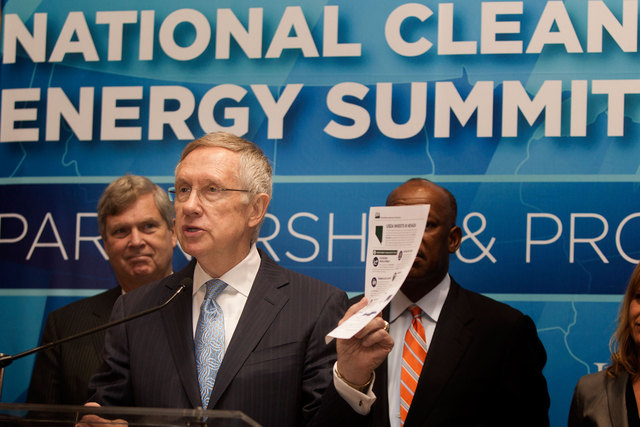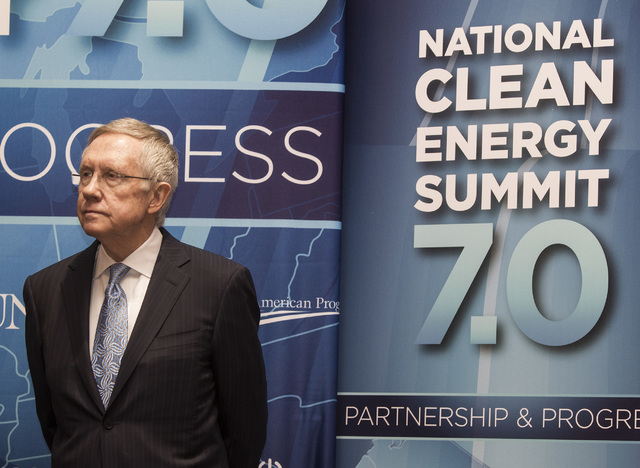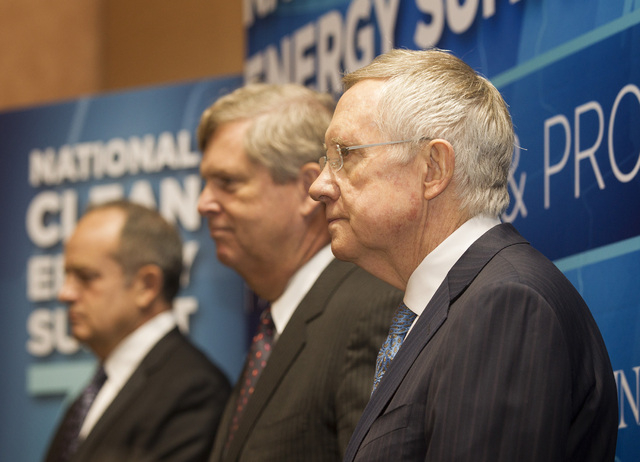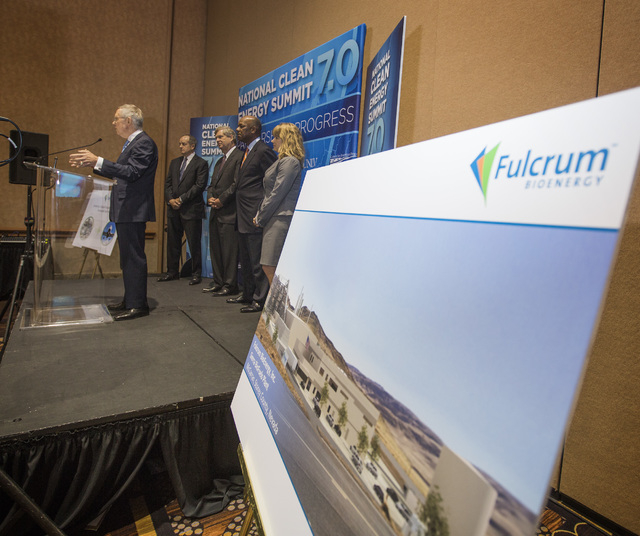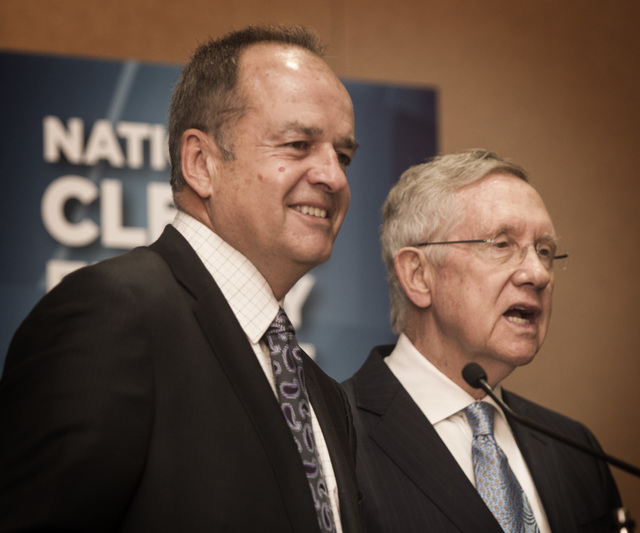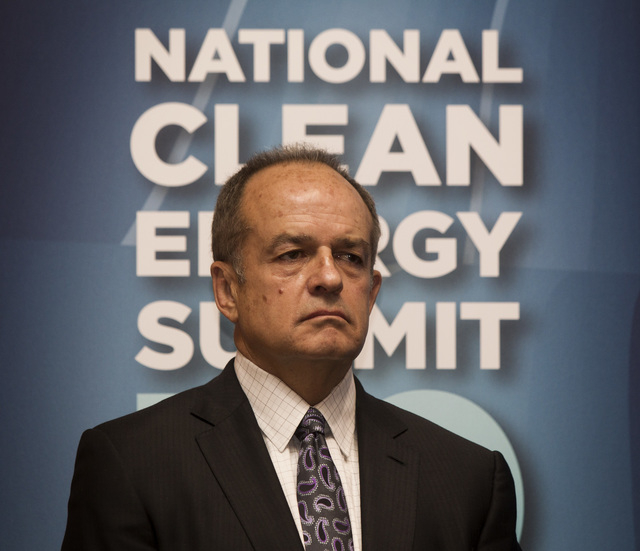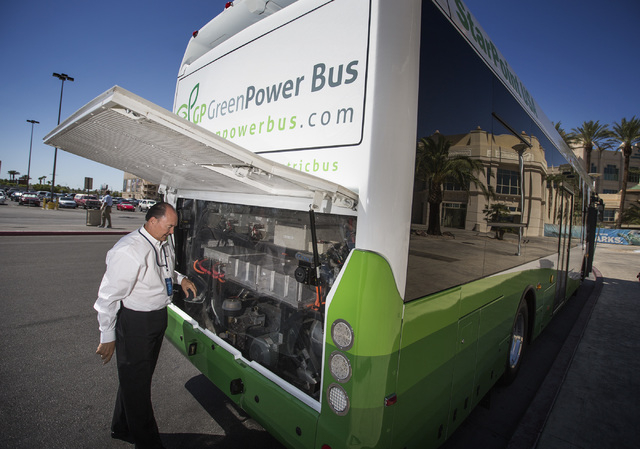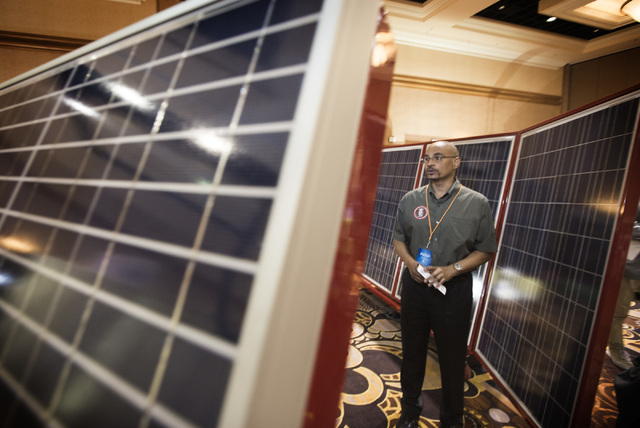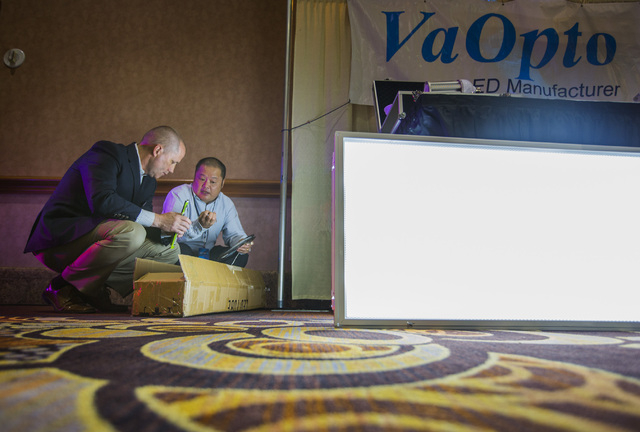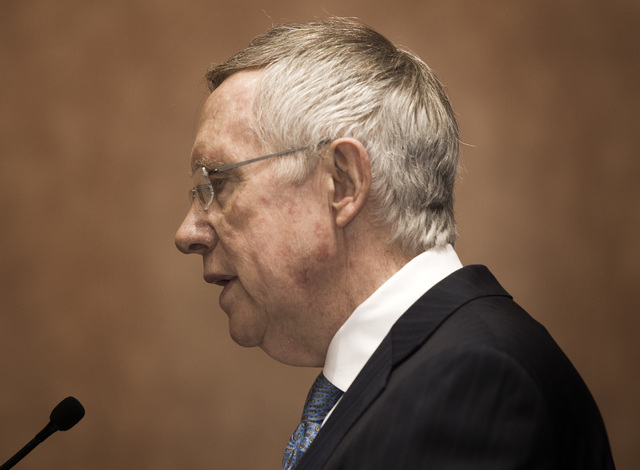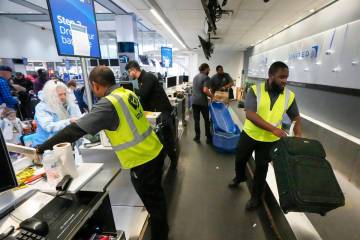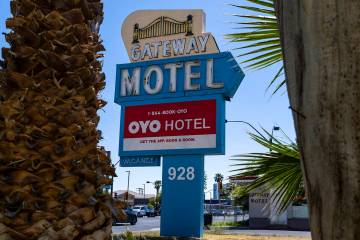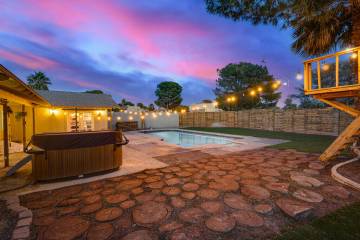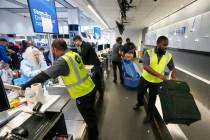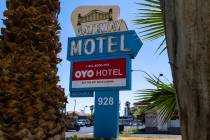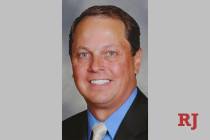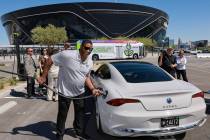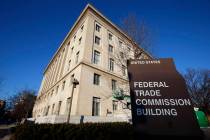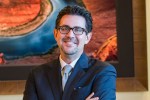Northern Nevada steals limelight at clean-energy summit
The National Clean Energy Summit has been held in Las Vegas every year since Sen. Harry Reid launched it in 2008, but Northern Nevada stole much of the limelight at this year’s event.
The summit at Mandalay Bay began Thursday with the announcement of a $105 million federal loan guarantee to help construct a biofuel refinery outside Reno, where garbage will be turned into jet fuel.
Then there was the $5 billion story of the day: Tesla’s decision to place its battery Gigafactory in the same Tahoe-Reno Industrial Center where the biofuel plant will be built.
The Tesla deal drew a round of applause when Reid mentioned it in his opening remarks.
He said the factory will “create thousands and thousands of good-paying jobs” and spur economic development in Nevada well beyond the site east of Reno. For example, he said, Tesla will be able to buy lithium for its batteries directly from a mine in the Esmeralda County town of Silver Peak.
“This is great news for Nevada, but it did not happen by accident,” the Nevada Democrat said. “This is a perfect example of the partnerships between private industry and government forged here at the clean energy summit.”
When Tesla CEO Elon Musk was the keynote speaker at the summit in 2012, he spoke about “the importance of innovation and investment in clean energy,” Reid said. “Now he is putting his words into action by announcing this critical investment in Nevada.”
Before his speech, Reid joined Agriculture Secretary Tom Vilsack to announce the loan guarantee that will allow Fulcrum BioEnergy to build its first biofuel plant and eventually produce aviation and marine fuel for the Defense Department.
“The nation is entering a new energy age that will make us more energy independent, cut carbon pollution and strengthen our economy, especially in rural communities where clean fuels will be produced,” Vilsack said.
Fulcrum president and CEO Jim Macias said the “garbage-to-fuels plant” in the city of McCarran, about 15 miles east of Reno, will make aviation fuel for commercial aircraft. With financing now in place, construction on the $200 million project should begin later this year, he said.
The Sierra BioFuels Plant will create 500 to 600 construction jobs and 100 permanent jobs when the plant opens in two years, Macias said.
The loan guarantee is the first USDA has made for the production of advanced biofuel for jets.
Last month, Fulcrum entered into a long-term agreement with Hong Kong-based Cathay Pacific Airlines to provide 375 million gallons of aviation biofuel over 10 years.
According to Fulcrum’s website, the company has secured no-cost agreements with two of the largest waste service companies in North America, Waste Management and Waste Connections, to get the municipal solid waste they need to make biofuel in Northern Nevada and elsewhere.
Macias said his company can turn trash “right out of the garbage trucks you see driving down the street” into “market-tested” fuel. The Nevada plant will be followed by “dozens” more production facilities across the country, he said.
This year’s National Clean Energy Summit culminated with a keynote speech by former Secretary of State Hillary Rodham Clinton. The one-day event was expected to draw between 900 and 1,000 people and 28 exhibitors showcasing green products or energy-saving initiatives.
A lot has changed, especially in Nevada, since the first summit was held.
Lydia Ball is executive director for the Clean Energy Project, a nonprofit, nonpartisan group that cosponsors the summit as part of its mission to promote investment in energy efficiency and renewable energy in Nevada and the West.
She said when Reid organized the first event, with former President Bill Clinton as the keynote speaker, NV Energy was still pursuing plans to build several new coal-fired power plants and the state’s entire renewable portfolio amounted to a handful of small geothermal operations and a single solar power facility.
Since then, Ball said, NV Energy has scrapped the new plants and committed to getting out of the coal-burning business while Nevada has seen $5.5 billion in renewable energy investment that has created thousands of jobs. “I think the summit has played a major role in that,” she said.
And the rate of renewable development seems to be accelerating.
As Reid told the audience Thursday, 2013 saw the installation of 400,000 solar panels across the nation, a 41 percent increase from the year before. “Over the last eighteen months, more solar panels have been installed than in the entire history of our country,” he said.
On Wednesday, 50 miles south of Las Vegas, ground was broken on Nevada’s latest utility-scale solar project, one of two now under construction in Southern Nevada that will rank as the largest in the state.
Nevada has adopted a mandate that requires at least one-quarter of the power used in the state to come from renewable sources by 2025, but Reid said there is no reason to stop there.
“We should build our clean renewable energy generation until we have at least enough capacity to cover one hundred percent of Nevada’s electric load,” the Senate Majority Leader said, echoing a challenge Bill Clinton issued at the first clean energy summit. “There’s simply no reason why Nevada cannot and should not achieve this goal. We have more than enough sun, wind and geothermal resources.”
Contact Henry Brean at hbrean@reviewjournal.com or 702-383-0350. Follow @RefriedBrean on Twitter.



